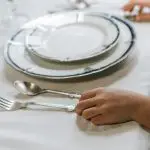To buy fabric from China, start by identifying the fabric type that suits your needs, like cotton or silk. Then, find reliable suppliers through verified platforms and request samples to check quality. Negotiate pricing, consider minimum order quantities, and clarify lead times to avoid delays. Choose appropriate shipping methods and handle customs carefully. Building clear, ongoing communication with your supplier is key. Keep going to uncover essential tips for smooth sourcing and stronger partnerships.
Table of Contents
Key Takeaways
- Verify supplier credentials and request fabric samples to assess quality, texture, and color before placing bulk orders.
- Compare pricing structures, MOQ, and lead times to balance cost and inventory needs effectively.
- Communicate clearly with suppliers to set realistic timelines, clarify specifications, and address any issues promptly.
- Choose appropriate shipping methods and prepare accurate customs documentation to avoid delays and extra fees.
- Build long-term relationships through timely payments, regular communication, and respecting cultural differences for smoother future transactions.
Understanding Different Types of Fabric Available in China
When you’re looking to buy fabric from China, knowing the different types available can save you time and money.
Chinese textile markets offer a wide range, from natural fibers like cotton, silk, and linen to synthetic ones like polyester and nylon.
Explore Chinese textile markets for a diverse selection of natural and synthetic fabrics to suit any project.
Silk, famous in China, is perfect if you want luxury and softness. Cotton is versatile and affordable, great for everyday wear. Linen offers breathability, ideal for warm climates.
Synthetic fabrics, on the other hand, provide durability and stretch, useful for sportswear or activewear. You should also consider blends, which combine the best qualities of different fibers.
Understanding these options helps you choose fabric that suits your project’s needs, budget, and quality expectations without overpaying or compromising on performance.
Finding and Evaluating Reliable Fabric Suppliers
You’ll want to verify your supplier’s credentials to guarantee they’re legitimate and trustworthy.
Next, assess the product quality by requesting samples or checking reviews from other buyers.
Finally, compare pricing structures to find a balance between cost and value that fits your needs.
Verifying Supplier Credentials
Although finding fabric suppliers in China is relatively easy, verifying their credentials guarantees you avoid scams and low-quality products.
Start by checking the supplier’s business license to confirm they’re legally registered. Use platforms like Alibaba and Global Sources, which often verify supplier credentials for you.
Request references or customer reviews to gauge their reliability. Don’t hesitate to ask for samples or factory audit reports to confirm their production capabilities.
Verify their export experience and certifications related to fabric standards or environmental compliance. Additionally, cross-check their contact details and physical address to ascertain legitimacy.
Taking these steps helps you build trust and guarantees you’re dealing with a reputable supplier, minimizing risks and setting the foundation for a successful business relationship.
Assessing Product Quality
Quality assurance plays an essential role in choosing fabric suppliers from China. To assess product quality effectively, start by requesting samples before placing any order.
Examine these samples closely for texture, colorfastness, and durability to guarantee they meet your standards. Don’t hesitate to ask suppliers about their quality control processes and certifications, such as ISO or OEKO-TEX, which indicate adherence to industry standards.
Additionally, read reviews and seek feedback from other buyers to gauge supplier reliability. Visiting the supplier or hiring a third-party inspection service can provide firsthand verification of production quality.
Comparing Pricing Structures
Many factors influence fabric pricing from Chinese suppliers, so it’s essential to compare pricing structures carefully before making a decision. You should look beyond the base price and consider shipping fees, minimum order quantities (MOQ), and payment terms. Some suppliers offer discounts for bulk purchases, while others charge extra for customization or faster delivery. Here’s a simple comparison table to help you evaluate offers efficiently:
| Supplier | Base Price (per meter) | MOQ (meters) | Shipping Cost | Payment Terms |
|---|---|---|---|---|
| Supplier A | $3.00 | 100 | $50 | 30% deposit |
| Supplier B | $2.80 | 200 | $70 | Full upfront |
| Supplier C | $3.20 | 150 | $40 | 50% deposit |
| Supplier D | $2.90 | 100 | $60 | 30% deposit |
Compare all these to find the best value.
Requesting Samples and Verifying Fabric Quality
When you’re ready to move forward, ask your supplier for fabric samples to check the quality firsthand.
Use simple inspection techniques like feeling the texture and checking colorfastness to confirm it meets your standards.
Also, verify the fabric’s authenticity by requesting certification or conducting tests if needed.
Sample Request Process
Before committing to a large order, you’ll want to request fabric samples to ascertain they meet your expectations.
Start by contacting the supplier and specifying the exact fabric type, color, weight, and any special finishes you need. Ask if they provide free or paid samples and clarify shipping costs upfront.
When you receive the samples, examine them carefully for texture, color accuracy, and durability. Don’t hesitate to request multiple samples if you’re considering different options.
Keep communication clear and professional, and confirm the sample delivery timeline to avoid delays.
Requesting samples early helps you avoid costly mistakes and guarantees the fabric’s quality aligns with your project requirements before placing a bulk order.
Quality Inspection Techniques
Although requesting samples is an essential step, thoroughly inspecting the fabric quality yourself guarantees you get exactly what you need. When you receive samples, check the fabric’s texture, weight, and color consistency under natural light. Test its strength by gently stretching and rubbing to see if it distorts or pills. Also, examine the weave for uniformity and flaws.
Use this quick reference table to guide your inspection:
| Quality Aspect | What to Check |
|---|---|
| Texture & Feel | Smoothness, softness, weight |
| Durability | Stretch, rub, and wrinkle tests |
| Visual Inspection | Color consistency, weave defects |
These steps help you confirm that the fabric matches your expectations before committing to a bulk order.
Authenticity Verification Methods
How can you be confident the fabric you order is genuine and meets your standards? Start by requesting samples before placing a bulk order.
Ask your supplier to send fabric swatches that represent the exact material, color, and texture you want. When you receive the samples, examine them closely for quality, weight, and feel.
Test the fabric’s durability by stretching, washing, or checking for colorfastness. If possible, compare the samples against known materials to verify authenticity.
Don’t hesitate to use third-party labs for professional testing, especially for specialized fabrics. Clear communication with your supplier about your quality expectations can prevent misunderstandings.
Negotiating Prices and Payment Terms
When negotiating prices and payment terms with fabric suppliers in China, you’ll want to approach discussions with clear priorities and flexibility. Start by understanding the supplier’s standard terms and prepare to propose terms that suit your cash flow. Don’t hesitate to ask for discounts on bulk orders or early payments. Clarify payment methods, such as T/T, L/C, or PayPal, to guarantee security and convenience. Here’s a quick comparison to help you decide:
| Payment Method | Key Benefit |
|---|---|
| T/T (Bank Transfer) | Widely accepted, lower fees |
| L/C (Letter of Credit) | Secure, protects both parties |
| PayPal | Fast, convenient for small orders |
Stay polite but firm, and be ready to compromise for a successful deal.
Managing Order Quantities and Lead Times
Once you’ve agreed on prices and payment terms, you’ll need to focus on managing order quantities and lead times to keep your production on track.
Start by confirming the minimum order quantity (MOQ) with your supplier to guarantee it fits your needs. Ordering too little can increase costs, while too much ties up capital and storage.
Next, clarify lead times—how long it takes from order placement to shipment readiness. Build in extra time for unexpected delays, especially if it’s your first order.
Stay in regular contact with your supplier to monitor progress and address issues early. Using clear communication and setting realistic timelines helps you avoid production bottlenecks, guaranteeing your fabric arrives when you need it without unnecessary rush fees or stock shortages.
Shipping Options and Handling Customs Clearance
Although choosing the right shipping method can seem overwhelming, understanding your options and customs requirements will save you time and money.
You can choose between air freight, sea freight, or express courier services. Air freight is faster but costlier, ideal for smaller, urgent orders. Sea freight suits large shipments but takes longer. Express couriers offer convenience for small parcels with quick delivery.
When handling customs clearance, verify all paperwork—commercial invoice, packing list, and bill of lading—is accurate.
Check import duties and taxes for your destination country to avoid surprises. Hiring a reliable freight forwarder or customs broker can simplify this process, helping you navigate regulations and prevent delays.
Tips for Building Long-Term Relationships With Suppliers
Building a strong relationship with your fabric supplier can make all the difference in securing consistent quality and reliable service. To do this, communicate clearly and regularly—ask questions and provide feedback promptly. Show respect for their expertise and cultural differences, which helps build trust.
Always pay on time; reliability fosters goodwill. Consider ordering samples before bulk purchases to guarantee standards. Be transparent about your needs and future plans; this encourages suppliers to prioritize your orders.
Visit their facilities if possible, strengthening personal connections. Finally, address issues calmly and professionally, aiming for solutions rather than blame.
Frequently Asked Questions
What Are the Environmental Regulations for Fabric Production in China?
You know what they say, “Rome wasn’t built in a day.” China enforces strict environmental regulations on fabric production, focusing on pollution control, wastewater treatment, and chemical usage to guarantee sustainable practices while you source your materials responsibly.
How to Handle Language Barriers When Communicating With Chinese Suppliers?
You can handle language barriers by using simple English, employing translation apps, and hiring bilingual agents. Don’t hesitate to ask for clarification and confirm details in writing to guarantee clear communication with Chinese suppliers.
Are There Specific Certifications to Look for in Chinese Fabric Suppliers?
You should look for certifications like OEKO-TEX Standard 100, GOTS for organic fabrics, and ISO standards. These prove quality and safety, helping you trust your Chinese fabric supplier’s products and manufacturing processes.
What Are Common Payment Methods Used in China’S Fabric Industry?
You might worry about secure payments, but don’t fret. In China’s fabric industry, common methods include T/T (bank transfer), L/C (letter of credit), and increasingly, online platforms like Alibaba Pay—offering you flexibility and protection.
How to Identify Counterfeit or Low-Quality Fabric Products From China?
You’ll spot counterfeit fabric by checking labels, feel, and weave closely. Don’t trust prices too good to be true. Always request samples, verify supplier credentials, and look for certifications to avoid low-quality Chinese fabric products.
- How to Vet and Choose a China-Based PCB Fabrication Manufacturer - June 20, 2025
- Exploring the Beauty of Printed Silk Crepe De Chine Fabric - June 20, 2025
- A Closer Look at Sanderson’s China Blue Fabric Collection - June 20, 2025







